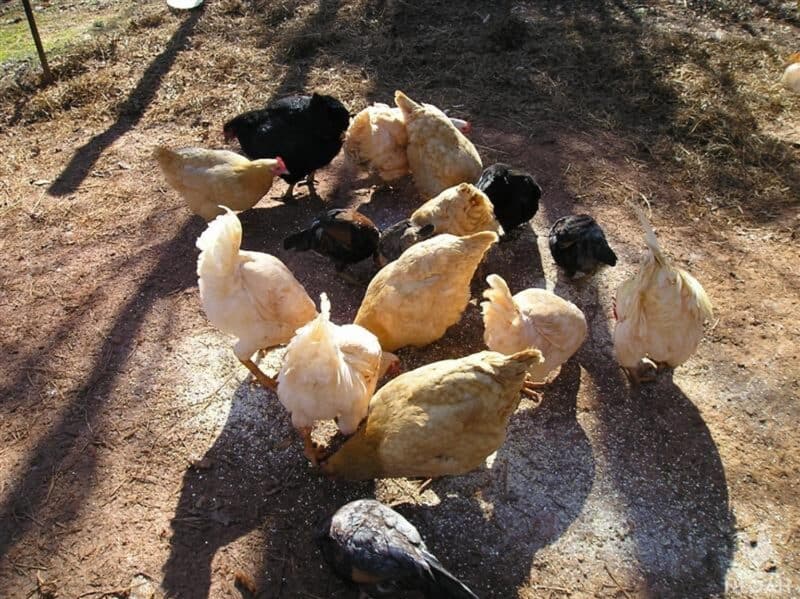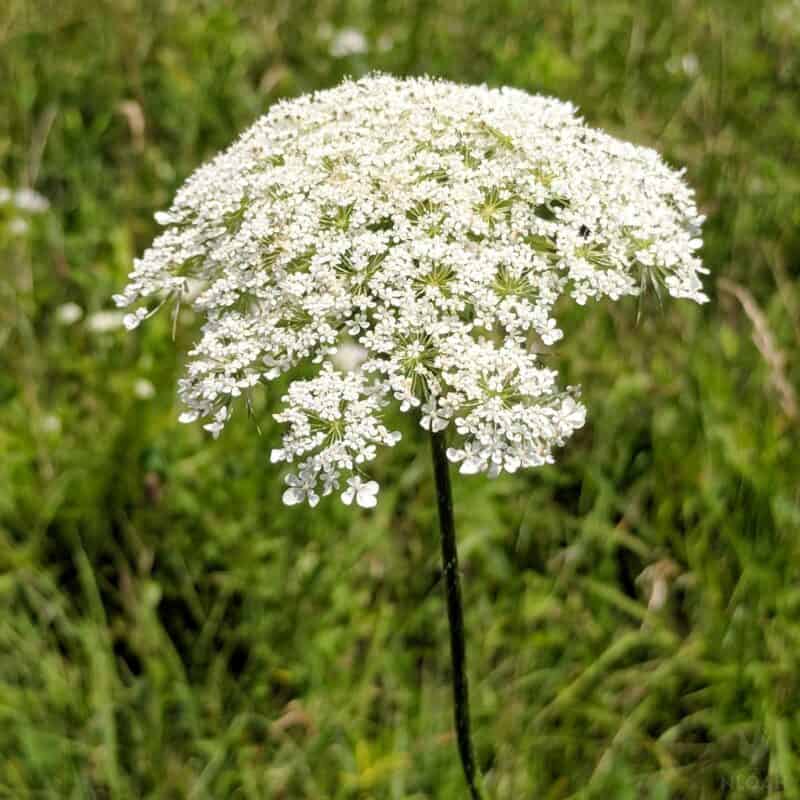Queen Anne’s lace is a pretty, delicate flowering weed, one with a fairly ostentatious name considering it is just a wild carrot!

If you have chickens, you might be wondering if they can dine on these wild Roots and other parts of the plant considering there are many other sorts of vegetables that they like.
So what’s the story? Chickens eat a lot of things but can they eat Queen Anne’s lace?
Yes, chickens may eat Queen Anne’s lace, and all parts of the plant are safe for conception, though mature roots might prove to be too tough for chickens to consume. However Queen Anne’s lace has a deadly look-alike, namely, poison hemlock which is lethal to chickens.
As you might expect, the wild form of domesticated vegetables remain safe and healthy for consumption, most of the time.
Queen Anne’s lace is not particularly nutritious, and the root itself may well be too tough to eat once the plant is mature, but you don’t have to worry about your birds snacking on the stems or flowers.
There is more to know, however, including about the deadly look alike mentioned above. Keep reading to get the full story.
Health Benefits of Queen Anne’s Lace for Chickens
Nutritional information for Queen Anne’s lace is pretty scarce, but we do know that the plant is a good source of vitamins A and C, as well as potassium, calcium, and iron.
So while it might not be the most nutrient-packed food out there, it certainly isn’t going to hurt your chickens to eat it.

Can Chickens Eat Queen Anne’s Lace Raw?
Yes, all parts of the weed are edible when raw- the flowers, stems, stalk and root. As mentioned above, the root will probably be too tough to eat when the plant is mature.
Can Chickens Eat Queen Anne’s Lace Flowers?
Yes, and the flowers are probably going to be a part they prefer when they are in bloom. These pretty white flowers with their lacy appearance are very delicate, and make a nice addition to your flock’s menu.
Can Chickens Eat Queen Anne’s Lace Leaves?
Yes. The leaves are tender and can also be eaten raw. Chickens will probably prefer the taste of the younger leaves, but older ones are still perfectly safe for them to eat.
Can Chickens Eat Queen Anne’s Lace Root?
Yes, and the root puts the “carrot” in wild carrot! Like was said above, the root of the plant is best when it is young, as it will be tender, if a little stringy.
Mature roots will become so tough and woody they will prove to be inedible- to man or chicken!
Can Chickens Eat Queen Anne’s Lace Cooked?
Yes, and all parts of the plant can be eaten cooked. The mature root, in particular, will be much easier to eat if it is cooked first. Keep in mind this will reduce the nutrient content, however.
Beware of Pesticide and Herbicide on Wild Queen Anne’s Lace
Be very cautious when serving or allowing chickens to dine on any Queen Anne’s lace that was sourced from a place not under your direct control.
This is especially important if you live in an agricultural area where herbicides and pesticides are commonly used.
The plant is a weed, after all, and some people might take to chemical methods of elimination if it is a pest.
These chemicals can be very harmful, even deadly, to chickens and may build up in their bodies over time.
Such bioaccumulation can cause serious health problems, including liver and kidney damage, so only serve your chickens wild Queen Anne’s lace that you know is safe.
Warning: Poison Hemlock is a Lookalike
Queen Anne’s lace has a deadly lookalike in the form of wild hemlock. This deadly plant looks very similar to Queen Anne’s lace, and it is easily confused for its benign cousin.
The difference is that poison hemlock can easily kill a person or a chicken, while the other is safe to eat.
The two plants can often be found growing side by side, which makes matters even worse. No pressure, eh? So how do you tell them apart?
The main thing you need to look for is the presence of purple spots or blotches on the stem of the plant. Poison hemlock has these spots, while Queen Anne’s lace does not.
Another great indicator is the presence of tiny, fine hairs on the stem and leaves; these hairs are found only on Queen Anne’s lace, not poison hemlock.
Lastly, poison hemlock grows considerably taller than Queen Anne’s lace, easily topping 6 feet. If you come across a giant example of what you think is wild carrot, think again!
As always, if you have any doubt, it is always better to be safe than sorry; poison hemlock can kill an adult human and easily kill a chicken. Take no chances!
How Often Can Chickens Have Queen Anne’s Lace?
You can feed Queen Anne’s lace to your chickens periodically as with any treat or supplemental menu item. Queen Anne’s lace is not nutritionally complete, so moderation is key.
Too much of this reasonably nutritious wild carrot can see chickens miss out on nutrition they would be getting from their feed or other food.
As a general rule, your flock should get most of its calories, around 90%, from chicken feed, with the rest coming from other food, treats and so forth.
Preparing Queen Anne’s Lace for Your Flock
Giving Queen Anne’s lace to your flock is a snap. You can let them nibble on the raw plant wherever it grows, or harvest the flowers, leaves and root for serving to them.
You can lay it down in a sort of bouquet for the flock to eat as they will or chop it up into mixed greens in a bowl. Remember, the mature root will be too tough unless it is cooked.
Can Baby Chicks Have Queen Anne’s Lace, Too?
Yes, although you should let them get a bit older, around 6 weeks of age first. Baby chicks have very delicate digestive systems and are more prone to getting an impacted crop if they eat too much fibrous material.
If you do give them Queen Anne’s lace, start with just a few finely chopped leaves or flowers and see how they handle them.
Tom has lived and worked on farms and homesteads from the Carolinas to Kentucky and beyond. He is passionate about helping people prepare for tough times by embracing lifestyles of self-sufficiency.
